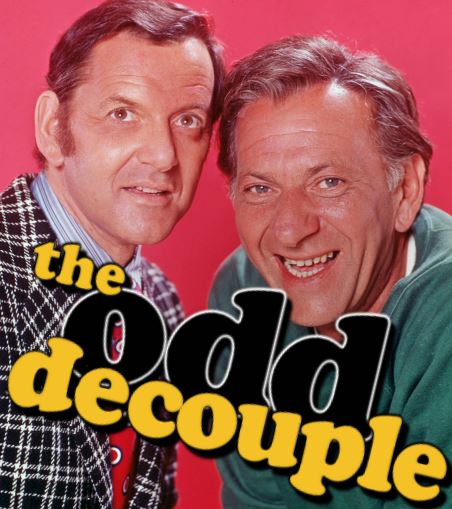 For years I have been warning ISO that it’s pursuit of Annex SL, written by a non-representative Technical Management Board rather than a consensus-driven Technical Committee, was going to lead to the “decoupling” of major industries such as aerospace and automotive. The industries themselves threw up warning flares, hinting — and whispering behind the scenes — that they would take their respective AS9100 and ISO/TS 16949 standards out of ISO’s hands, and publish them themselves. In 2013 I published the “Public Call” document that pleaded with ISO to change its course, and reconsider the adoption of Annex SL in ISO 9001; they famously responded by trying to sue me and rejecting the call outright. The lawsuit threat failed, and now we see that ignoring the advice did, too.
For years I have been warning ISO that it’s pursuit of Annex SL, written by a non-representative Technical Management Board rather than a consensus-driven Technical Committee, was going to lead to the “decoupling” of major industries such as aerospace and automotive. The industries themselves threw up warning flares, hinting — and whispering behind the scenes — that they would take their respective AS9100 and ISO/TS 16949 standards out of ISO’s hands, and publish them themselves. In 2013 I published the “Public Call” document that pleaded with ISO to change its course, and reconsider the adoption of Annex SL in ISO 9001; they famously responded by trying to sue me and rejecting the call outright. The lawsuit threat failed, and now we see that ignoring the advice did, too.
Pedal to the Metal
Now the automotive boys have taken their ball and moved it to their own playground. The previous ISO automotive QMS standard, ISO/TS 16949 will no longer be published by ISO, but instead by the IATF and sold through its own network of distribution companies, such as the AIAG in the US and IATF France in Europe. It abandons any reliance or slavish connection to anything developed by ISO, and is now a fullly independent product of the International Automotive Task Force. Future editions will move further and further from any legacy ISO language.
This is crippling for ISO. As I make clear in my book Surviving ISO 9001:2015, ISO is not a standards developer, contrary to its claims. It is, rather, a vanity press publisher that takes the intellectual property of unpaid volunteers, and then publishes the resulting book, retaining the profits. ISO not only doesn’t pay its authors, it actually charges a fee to countries for sending their dupes to work on its TCs and sign up for this lopsided arrangement. It then charges more fees to anyone who wants to publish the resulting books in their own countries (such as when ANSI sells ISO 9001 in the US), and then invokes even more fees if anyone wants to use the document in another work, through copyright fees. Finally, it then expects member nations to fund the actual development activities themselves, by hosting meetings and paying for the hotels and travel of the authors; ISO pays for none of that.
According to its annual reports, ISO has three main sources of revenue, none of which have anything to do with standards development: membership dues, licensing fees, and book sales. The shocking thing about “decoupling” is that it robs ISO of all three revenue sources, overnight.
Like An Airbag in the Face
By publishing the new “IATF 16949:2016” standard itself, ISO immediately loses the book sales revenue. That only accounts for about 17% of its revenue, though, so no big deal… right? Not so. Since ISO doesn’t own IATF 16949, it also can’t charge copyright or licensing fees to anyone who wants to use the standard for, say, a book or seminar; instead, the IATF will get that money. That represents a loss of another 22% of ISO’s annual revenue source.
Finally, since IATF is not an official “national member body” representing a country, it doesn’t have to pay any membership fees to ISO; that represents the biggest portion of ISO’s annual revenue — 55% — so this is the most crippling loss. By decoupling, the IATF has not only utterly gutted ISO’s entire business model, it adopted it for itself. Now the IATF will be reaping that income, and no one else.
What’s even more embarrassing is that ISO was caught so flat-footed, it had no contingency plan in place. So while it could have created a competing ISO 16949 automotive standard of its own, it never put the pieces together to have that option in the wings. Now ISO is forced to literally advertise IATF 16949 on its own website, effectively sending potential customers to a competitor. This is the kind of thing that usually happens after a company loses a class action lawsuit, not as a result of mere internal incompetence. There’s no greater evidence of ISO’s refusal to listen to stakeholders than this; this was a mistake that was entirely avoidable.
This will be the legacy of former ISO Secretary General Rob Steele, who probably left knowing his house was imploding around him. It’s also probably why ISO can’t seem to find a permanent replacement; who’d want that job?
Rocket Jockeys, Assemble!
In the aerospace industry, the representatives of the International Aerospace Quality Group (IAQG) took a different posture, somewhat driven by their own dull wit and lack of spine. They opted instead to release AS9100 Rev D aligned with ISO 9001:2015 and Annex SL, even if they had to hammer the far superior AS9100 Rev C into some bastardized shape to make it fit. Now, AS9100 has competing and awkward risk management approaches, as it tries to carry over the formal risk management requirements from Rev C into the “risk based thinking” model fabricated out of thin air as a result of Annex SL. Now defense organizations and high-stress aerospace supplies are stuck with a standard that calls for a “calm, emotionally protective work environment.” It’s a mess.
Worse, the IAQG tied itself to the arbitrary three-year sunset of ISO 9001 certifications, a ploy developed by ISO and enforced by its pals in the IAF, designed to force people to buy the new standard, since getting them to do it doesn’t work. Since the IAQG dragged their feet, however, and released AS9100 Rev D a year late, it means that aerospace companies have only two years to implement a more complicated QMS standard than the users of vanilla ISO 9001. It’s insane, and nearly guarantees that companies will abandon AS9100, simply because the deadline is impossible to meet. Prior to this debacle, sources inside Lockheed told me there was no way their own internal organizations would be able to update in three years, just due to documentation changes alone; now, aerospace primes — who have their own people representing them on IAQG — won’t physically be able to comply with the new rules. Isn’t it time Buddy Cressionnie got fired, for heaven’s sake?
Again, this is because the IAQG — unlike the IATF — is comprised of spineless, unqualified benefactors of the Peter Principle, many of whom have a foot simultaneously in ISO TC 176, as authors of ISO 9001. They are conflicted, since if they don’t toe the line with ISO, they might lose those leadership spots in TC 176 and all the seminars and speaking tours that go along with it.
But the IAQG will definitely decouple anyway, and we can expect AS9100 Rev E to be published as IAQG 9100 by, I’d guess, 2018. This is because to do otherwise would be absolutely batshit crazy, given the free money sitting right there for the taking. The automotive industry laid out the map for them, handed them the keys to the vault; all IAQG has to do is reach out and take it. Eventually, the members of IAQG’s leadership will realize there’s far more money for them, personally, if they steal AS9100 away from ISO than there is for them to remain aligned to ISO. In fact, there are likely to be more speaking and book publishing opportunities if they do so. Unfortunately, this means that as bad as TC 176 is, it will lose some of its least-bad actors when the aerospace boys quit. This just means more Lorri Hunt and Craig Williams — shudder.
Bad Time To Be a Standards User
What does this mean for users? It means that for companies that want to hold both ISO 9001 and AS9100, there will have to be concessions made by the IAQG that recognize ISO 9001 audits — and that’s not guaranteed — or companies will have to undergo two separate audits, one for each standard, each conducted by a separate audit team, possibly by entirely different auditors. This will effectively double the number of audits companies have to undergo.
ANAB needs to worry, too. The IATF and IAQG are slowly encroaching into their territory, acting as their own accreditation bodies, and there’s really no need to use Randy Dougherty’s team of narcoleptic nincompoops anymore. That’s a fourth source of revenue, after all; every certificate that is issued includes fees that are funneled up to the accreditation body, and why give that to ANAB if you can keep it for yourself? The problem here is that, again, it means audits must be separated, and can’t be shared because they will be issued under entirely different accreditation schemes.
The ultimate endgame: the IATF cuts out all middlemen, becomes its own registrar, accredits itself, and not only issues the standard, but also certifies companies. Look at how IRCA shrugged off third party accreditation for the certification of auditors, and you can see a glimmer of that model. If that happens, then you will only be able to get AS9100 certified through IATF, just how PRI monopolizes Nadcap accreditation and the CMMI Institute monopolizes CMMI appraisals.
It’s good that ISO and the accreditation bodies are feeling pain, but it’s a shame this will all come at the expense of user organizations. I predicted a while back that this would happen, and said that we would experience about a 20-year period of “standards explosions” followed by an inevitable retraction when the market rejects the unnecessary redundancy and associated costs. My crystal ball says that this mess will resolve itself by 2040, but it won’t be led by ISO, which will be reduced to near rubble; some other actor will step up and re-unify management system standards. But that’s a long time from now.
Once again, we have the ISO TMB to thank for this, and a host of bad actors like Kevin Knight, Anne-Marie Warris, Susan LK Briggs, Stefan Tangen, Charles Corrie, Mick Maghar and others. They pushed their Annex SL monstrosity on the world, while insulating themselves from any outside feedback, and now their own house is falling down around them. If ISO loses it’s three primary sources of revenue, they are going to be held accountable; it’s a shame that it will take ISO’s near destruction for that to happen, when ISO was warned about this years ago.
Want to help fix this? Read this.
Christopher Paris is the founder and VP Operations of Oxebridge. He has over 35 years’ experience implementing ISO 9001 and AS9100 systems, and helps establish certification and accreditation bodies with the ISO 17000 series. He is a vocal advocate for the development and use of standards from the point of view of actual users. He is the writer and artist of THE AUDITOR comic strip, and is currently writing the DR. CUBA pulp novel series. Visit www.drcuba.world







